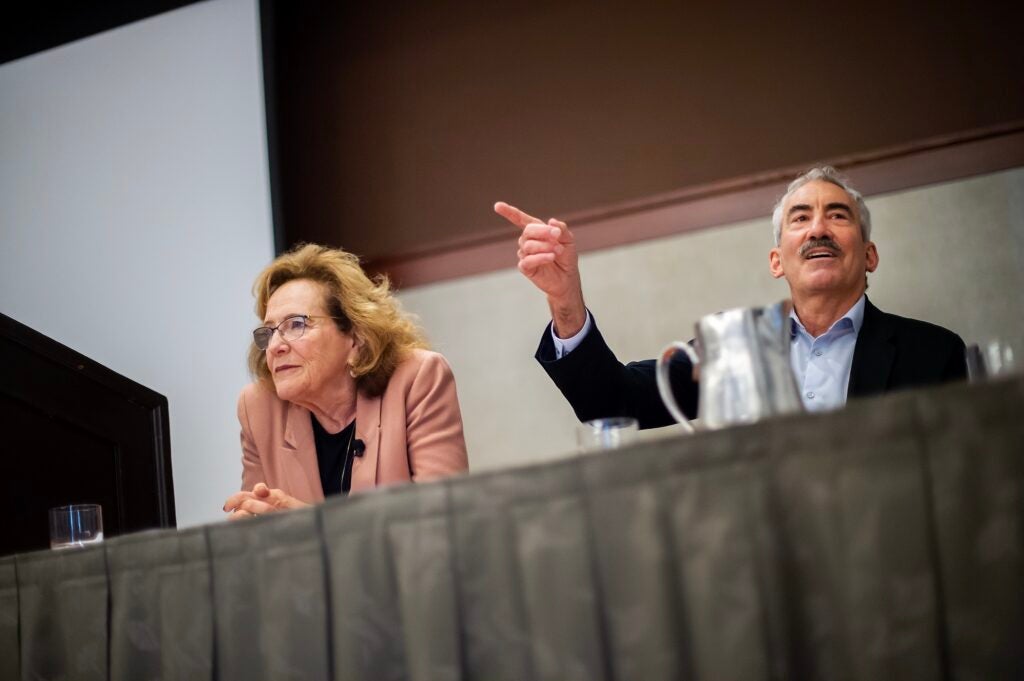Q&A with Dr. George Loewenstein on I-Frame, S-Frame, and the Direction of Behavioral Public Policy

If you work in the field of behavioral economics, you have probably heard someone in the last year talk about “i-frame and s-frame.”
The terms were coined by Drs. George Loewenstein (a CHIBE-affiliated faculty member) and Nick Chater, who authored the paper “The i-frame and the s-frame: How focusing on individual-level solutions has led behavioral public policy astray,” which was published in Behavioral and Brain Sciences.
The paper argues that behavioral scientists have focused too much of their efforts on trying to solve some of society’s biggest problems by focusing on changing individual behavior — the i-frame — instead of by addressing systemic or structural issues — the s-frame. Take the example of climate change: the impact of i-level interventions to try to reduce carbon emissions (such as nudges, small incentives, awareness of social norms, etc.) pales in comparison to the impact that s-frame interventions (such as a carbon tax) can have on climate change. Drs. Loewenstein and Chater give several other examples of how s-level changes are needed for additional societal problems such as obesity, retirement savings, and pollution. They also argue that i-level efforts might deflect attention and support from s-level interventions as well.
“We argue that behavioral and social scientists who focus on i-level change should consider the secondary effects that their research can have on s-level changes,” they wrote. “In addition, more social and behavioral scientists should use their skills and insights to develop and implement value-creating system-level change.”
The Center for Health Incentives and Behavioral Economics spoke with Dr. Loewenstein about his paper. Read our Q&A below.
What prompted you to write the i-frame and s-frame paper? Have you been thinking about this issue in the field for a while, or did you see something specific that felt like an “a ha” moment and made you want to write this?
For over 10 years, I’ve been teaching a course on behavioral economics and public policy. In the second (main) part of the course, we go through different policy problems — e.g., high-cost low-value health care, obesity, inadequate financial provision for retirement, drug addiction — and discuss the state of the problem in the United States, and behavioral interventions to combat the problem. At some point, I started to realize that almost every problem was the obvious result of disastrous policies (e.g., the atomized health care system we have in the United States in which providers are compensated on a fee-for-service basis). And, increasingly, I came to worry that the individualistic (i-frame) interventions I had been designing and researching were just band aides that falsely promised quick-fix solutions to problems with systemic origins.
What kind of feedback have you received regarding the paper?

I don’t think I’ve ever received so much, and such positive, feedback about any paper I’ve written. Even some of the most seasoned nudgers (a group I’d include myself in) praised the paper. One very prominent long-time nudger wrote to the effect that “it isn’t every day that a paper changes my perspective on something I’ve been doing for a decade.” Of course, there were those who took exception to the paper, including Katy Milkman who opened our debate at CHIBE’s Behavioral Science and Health Symposium with the unforgettable “I despise this paper.” I was actually grateful to Katy (who I am a great fan of, like pretty much everyone) because her aggressive opening paved the way for a super-engaging, hard-hitting debate, that I benefited from and enjoyed a lot, and which we got a lot of positive feedback on. (Other critics are represented among, though a minority of, the comments that will be published along with the paper in Behavioral and Brain Sciences).
What would you say to people who disagree with your argument that too much focus has been paid to i-level interventions? What’s your reaction to this response paper written by Dr. Cass Sunstein?
I hadn’t seen that paper, but in his comment on our Behavioral and Brain Sciences piece, Cass does refer to us as “conspiracy theorists.” (I think we have a pretty good response to the charge in our response to all the commentaries.) Cass published a different critique of our paper, which I did read carefully, in which he dubs us “reactionaries,” a charge we vehemently reject (and defend ourselves against, in a response we wrote in the same journal, Behavioural Public Policy). If a reactionary is someone who opposes change, we are definitely not reactionaries; we are calling for much more radical responses to policy challenges than simply nudging.
Your paper has led to some great discussions. What kind of impact do you hope your paper makes in the behavioral science world or in public policy?
Our dream would be that (1) it makes outsiders to the field appreciate that the behavioral sciences have a lot more to offer to policy than nudges, and (2) it leads some researchers to change the focus of at least some of their research — to investigating how to increase the likelihood that the types of radical policy-shifts that are so dramatically needed actually get implemented.
Anything else you want to add that you’ve been thinking about?
I would say that a, if not the, major theme that emerged only after we started writing the paper is the role that private firms have played in advancing the i-frame. Nick Chater and I don’t think that this is a conspiracy between firms in different sectors; rather, firms in a wide range of sectors have found that they can advance their own interests by promoting the i-frame while relentlessly lobbying for substantive s-frame policies that favor their own interests — where they know the true action lies.